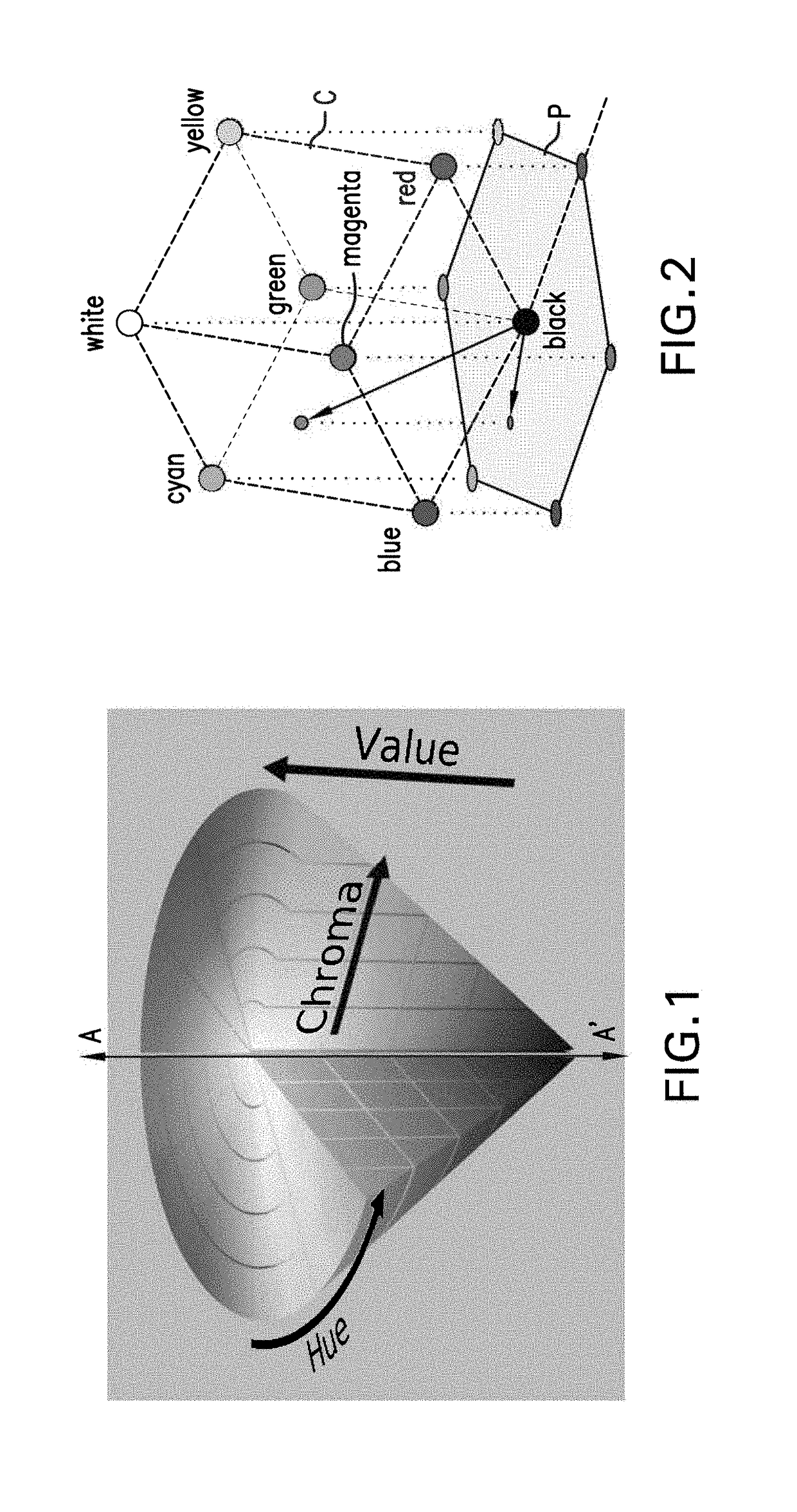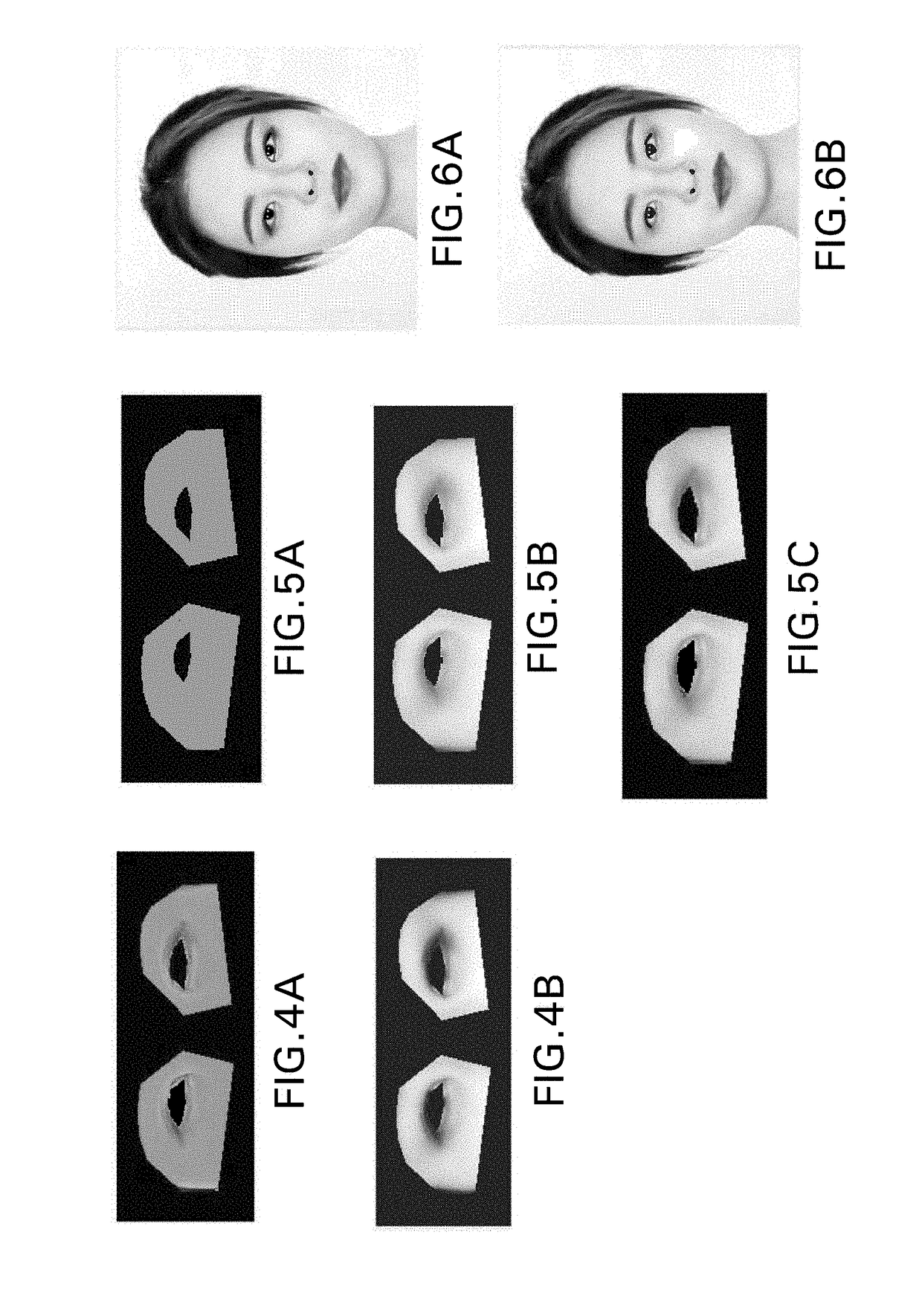Systems and Methods for Virtual Facial Makeup Removal and Simulation, Fast Facial Detection and Landmark Tracking, Reduction in Input Video Lag and Shaking, and a Method for Recommending Makeup
a virtual facial and makeup removal technology, applied in image enhancement, packaging foodstuffs, instruments, etc., can solve the problems of false, inconsistent or unrealistic, affecting the performance of such an application in a video, and the existence of virtual systems, so as to achieve the effect of adding transparency and smoothness, and adding transparency and shin
- Summary
- Abstract
- Description
- Claims
- Application Information
AI Technical Summary
Benefits of technology
Problems solved by technology
Method used
Image
Examples
embodiment 1000
[0113]FIG. 3 shows a flow diagram of a method for virtually removing makeup in accordance with an embodiment of the present disclosure, generally referred to as embodiment 1000. Referring to FIG. 3, in Step 1010, an input is acquired by a user. The user input can be any facial image as that term is defined herein, including a single image, a repeat photo, a single video frame or a video having multiple frames, captured by the user using a mobile device or uploaded to the system of the present disclosure. Once acquired, the facial image is detected or identified from the user input. It is preferred that in the removal method, only one image is input, and that the face is detected once the image is uploaded, however, the invention is not limited to only one image input.
[0114]Upon detection of the face of the image, in Step 1020, the facial landmarks are located using the input image. Landmarks can be preset and selected such as top of the chin, outside edge of each eye, inner edge of ...
embodiment 300
[0144]The method is illustrated in the flowchart of FIG. 26a herein as embodiment 300. In the method, the image of a user is acquired in Step 310. Facial landmarks are detected as described herein in Step 320. A GMM based on the skin color is then trained using data from a lip-free region in Step 330, and in Step 340, an initial probability map is created for the lip in the lower face as described above. In Step 350, the threshold for the image binarization is tuned until the contour satisfies the lip region standard criteria as described above. If a lip region is detected, then GMMs are trained for the initial lip and non-lip regions in Step 370. If a lip region is not detected, then the threshold continues to be tuned to meet the criteria. After Step 370, refined probability maps are created based on the two learned GMMs in Step 380. In Step 390, the lip contour is then smoothed with an edge detection algorithms and lip shape prior knowledge. Finally, the optimal lip region is ext...
embodiment 400
[0197]As noted above, the methods of makeup removal and application, as well as the applied end effects and texture simulations may be used independently or in an overall method and system, and may be supplemented by the various enhanced techniques noted below. FIG. 37 shows a general flow chart of a combination 500 of some of the embodiments of methods and systems herein. An input image II, II′ (as defined herein) can be provided by a user through a user interface (UI). The user interface can preferably communicate a digital input image as defined herein. The input image II, II′ may be processed and the device and color calibrated as described in this disclosure (200, 8000) and the landmarks detected and / or identified and annotated using various landmark detection and annotation methods described herein 300, 3000. When providing the input image II, II′, the user can elect to use the virtual makeup removal methods and systems described herein, including, for example, method 1000 to ...
PUM
 Login to View More
Login to View More Abstract
Description
Claims
Application Information
 Login to View More
Login to View More - R&D
- Intellectual Property
- Life Sciences
- Materials
- Tech Scout
- Unparalleled Data Quality
- Higher Quality Content
- 60% Fewer Hallucinations
Browse by: Latest US Patents, China's latest patents, Technical Efficacy Thesaurus, Application Domain, Technology Topic, Popular Technical Reports.
© 2025 PatSnap. All rights reserved.Legal|Privacy policy|Modern Slavery Act Transparency Statement|Sitemap|About US| Contact US: help@patsnap.com



